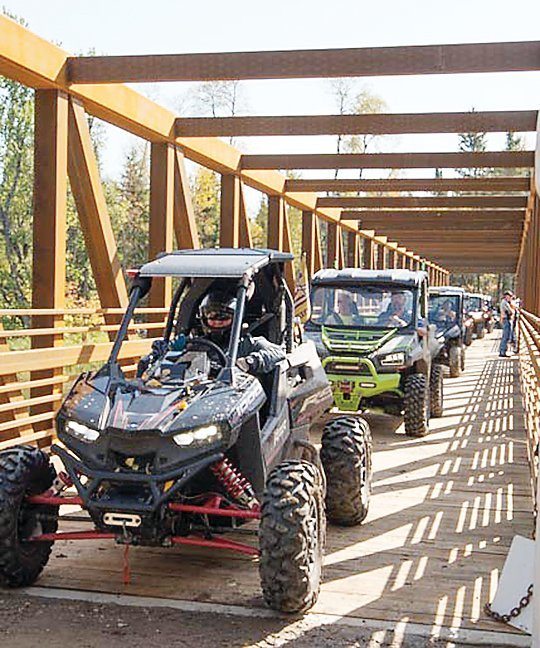What’s so great about Grant-in-Aid?
By Morgan Wendt, Off Highway Vehicle Specialist Individual Placement / AmeriCorps Member placed at Minnesota Department of Natural Resources Division of Parks and Trails
The Minnesota Department of Natural Resources offers a cost-share program designed to help off-highway vehicle (OHV) enthusiasts establish trails all around the state. The grant-in-aid (GIA) program was first established in 1984 and will be getting a substantial update in 2023. I’ve been working a ton on the improvement process lately, so I thought it would be fun to share a bit about the program. During it’s nearly 40 year career, the GIA program has assisted in establishing over 3,000 miles of fun on over 100 trails. In Minnesota, OHV is a term that encompasses all-terrain vehicles (ATVs), off highway motorcycles (OHMs), and off road vehicles (ORVs). OHMs are informally referred to as dirtbikes and ORVs are high clearance 4×4 vehicles like Jeeps. Clubs from these groups can apply to build trails by submitting a detailed application to the DNR, then proceeding through the seven step GIA process.
The initial application will contain details like location, land owners, local government support, ecological impacts, and estimated costs. If the application has provided sufficient information, it will be reviewed within the OHV program within the parks & trails department. If no issues are found here, the application can go to step two, where it will be reviewed by other departments local to the proposed trail. This will include things like forestry, fish and wildlife, enforcement, and other divisions that may be impacted by the trail. These departments will provide comments and based upon that, the trail plan may be revised to accommodate their concerns. When all parties are satisfied, the application can proceed to step three. This step is very similar to step two, but it is reviewed by staff at the regional level. Regional staff may provide additional comments, which again, may modify the trail plan. Next is step four, which consists of project comments and environmental reviews. This step gives the general public the chance to comment on the project, and determines the level of environmental review that the project will need. Once the public comment period is over and environmental review has been completed, the project can move to step five. The OHV team and leadership at parks & trails will give the project one final look over the project and make any final recommendations before sending it to step six. This step is an exciting one because construction and development of the trail can finally begin! Oftentimes, the GIA process up to this point feels very bureaucratic and almost never-ending; so to be able to put boots on the ground is an amazing feeling. The step after this, step 7, is ongoing maintenance and monitoring of the trail.
This process can be long and difficult, but the passion of clubs continues to push it through. Once established, these trails provide hours of family fun, an opportunity to experience the beauty of Minnesota’s natural resources, and can provide economic benefit to small communities surrounding the trail or route. If you’re looking for a new way to experience the outdoors this summer, consider registering your truck or ATV and finding some OHV trails near you!


